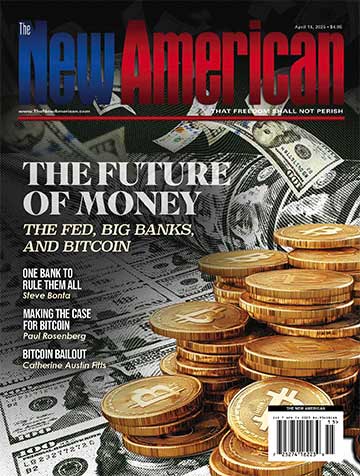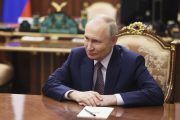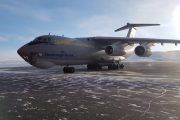
There was no Bush, no Cheney, and no mushroom cloud mentioned in the address former Secretary of State Condoleezza Rice delivered to the delegates who greeted her and her speech with loud and repeated standing ovations at the Republican National Convention August 29.
The only member of the George W. Bush administration to speak at the convention, Rice was a key member of the foreign policy team during all eight years of the Bush administration, serving the former president as national security advisor before taking charge of the State Department. Yet she made no mention of her former boss or of Vice President Cheney or the Iraq War, of which she was a principal architect. The only mention of Iraq in her remarks concerned “hostile neighbors” now challenging its “young fragile democracy.” There was no word of the “liberation” of Iraq, Operation Iraqi Freedom, or the need to remove the “weapons of mass destruction” that the Bush administration claimed was the principal reason for the invasion and the need for regime change in Baghdad.
In September of 2002, when the Bush administration was building up support for an invasion of Iraq, Rice, then the president’s national security advisor, was interviewed by CNN’s Wolf Blitzer and warned that Iraqi dictator Saddam Hussein was on the verge of acquiring nuclear weapons. “We know that he has the infrastructure, nuclear scientists to make a nuclear weapon,” she said. “And we know that when the inspectors assessed this after the [1991] Gulf War, he was far, far closer to a crude nuclear device than anybody thought — maybe six months from a crude nuclear device.”
Then, acknowledging there was no “smoking gun” evidence that Iraq was on the verge of acquiring a nuclear capability, Rice made the dramatic statement that produced headlines around the world. “The problem here is that there will always be some uncertainty about how quickly he can acquire nuclear weapons,” she said. “But we don’t want the smoking gun to be a mushroom cloud.”
In the same interview, Rice spoke of shipments to Iraq of aluminum tubes that “are only really suited for nuclear, weapons, programs, centrifuge programs.” The CIA had reported that the tubes “have little use other than for a uranium enrichment program,” adding that they “exceed any known conventional weapons application, including rocket motor casings for 81-mm multiple rocket launchers.” But the Department of Energy offered an opposing view, stating the tubes in question were “not consistent with a gas centrifuge end use” and were consistent with conventional artillery weapons.
On October 1, 2002, barely three weeks after Rice issued her “mushroom cloud warning,” America’s 16 intelligence agencies produced a National Intelligence Estimate, reporting that most agencies believed the aluminum tubes “provide compelling evidence that Saddam is reconstituting a uranium enrichment effort for Baghdad’s nuclear weapons program.” Included in that report, however, was the dissenting view of the State Department’s Bureau of Intelligence and Research (INR), which sided with the Department of Energy assessment: “INR considers it far more likely that the tubes are intended for another purpose, most likely the production of artillery rockets,” the bureau reported.
Yet the Bush administration continued to sound the alarm over Iraq’s alleged nuclear weapons program and the aluminum tubes. In a speech in which he compared the alleged threat of a nuclear Iraq to the 1962 Cuban missile crisis, President Bush spoke of the weapons program as though it were a certainty and cited the aluminum tubes as proof of it.
“Iraq has attempted to purchase high-strength aluminum tubes and other equipment needed for gas centrifuges, which are used to enrich uranium for nuclear weapons,” he said in a much-publicized national security address in Cincinnati on October 7, 2002. The drumbeat for war continued right up to the “shock and awe” offensive that marked the beginning of the war in March of 2003. After U.S. forces had overthrown the regime in Baghdad and had occupied the country for more than a year, the Iraq Survey Group ended its search for Iraq’s “weapons of mass destruction” with this conclusion:
The ISG has not found evidence that Saddam possessed WMD stocks in 2003, but [there is] the possibility that some weapons existed in Iraq, although not of a militarily significant capability.
Defenders of the war have argued ever since that “hindsight is always 20/20.” But the contradictory reports about the aluminum tubes came nearly six months before President Bush launched “Operation Iraqi Freedom.” The needed foresight might have been found in an October 4, 2002 report by Jonathan Hadley in the Knight Ridder newspapers. Hadley wrote of a trend that appeared to go unnoticed by most of the “mainstream media.”
Several senior administration and intelligence officials, all of whom spoke only on the condition of anonymity, charged that the decision to publicize one analysis of the aluminum tubes and ignore the contrary one is typical of the way the administration has been handling intelligence about Iraq.
The White House and the Pentagon, these officials said, are pressuring intelligence analysts to highlight information that supports Bush’s Iraq policy and suppress information and analysis that might undercut congressional, public or international support for war.
The issue when Congress approved the Authorization for the Use of Military Force in the fall of 2002 was neither hindsight nor foresight, but plain sight. A small minority in Congress, refusing to see what wasn’t there, insisted the administration simply had not made the case for war.
Perhaps Dr. Rice had not heard about, or has since forgotten, the assessment of Iraq’s military capability offered by her predecessor at State, Colin Powell on February 24, 2001. “He has not developed any significant capability with respect to weapons of mass destruction,” Powell said, speaking of Saddam Hussein at a press conference in Cairo, Egypt. “He is unable to project conventional power against his neighbors.” Saddam would have made a remarkable advance in weaponry if he had acquired the vast stockpiles of chemical and biological weapons the Bush administration claimed he possessed and the ability to make and deliver a nuclear bomb, all in the 18 months between Powell’s statement that he had no capability and Rice’s warning of a “mushroom cloud.” And while it’s true that Powell, based on a good deal of false “intelligence,” later came to espouse the administration line, the ISG report confirmed his earlier statement.
So the United States waged a needless war that cost the lives of more than 4,000 U.S. military personnel and more than 100,000 Iraqi civilians, while leaving some 2.5 million to 3 million refugees homeless. Perhaps that’s why Dr. Rice, in her recent speech at the Republican National Convention, never mentioned the liberation of Iraq, or even the 10-year-old (and counting) war in Afghanistan. Nor did she warn of an assumed nuclear threat from Iran, though John McCain sounded that alarm in a pre-prime time speech that evening and Mitt Romney alluded to it briefly in his acceptance speech the following night. Rice did, however, describe a future in which we must be ready to defend nearly anyone almost anywhere on earth, “from Israel to Columbia, from Poland to the Philippines.”
And if we start another war in another land based on false intelligence and an overbearing desire to subordinate the fate of other people to our ambitions, Condoleezza Rice may get to address another convention and pretend it never happened.
Photo of Condoleezza Rice: AP Images




